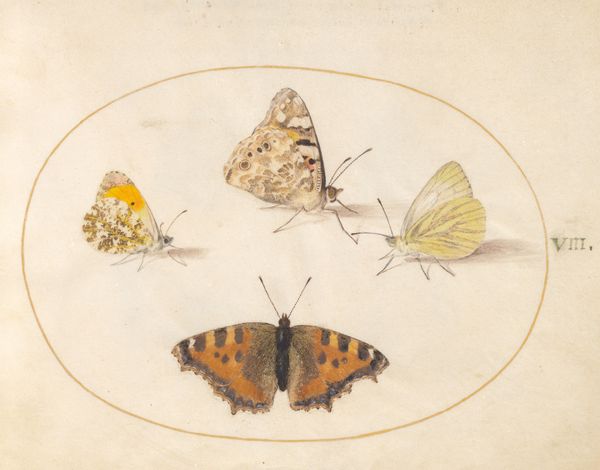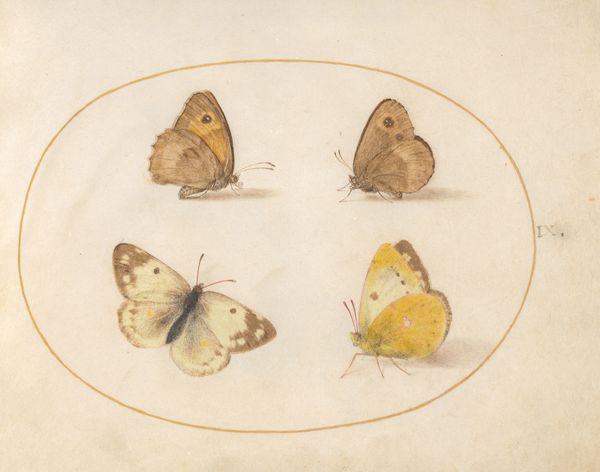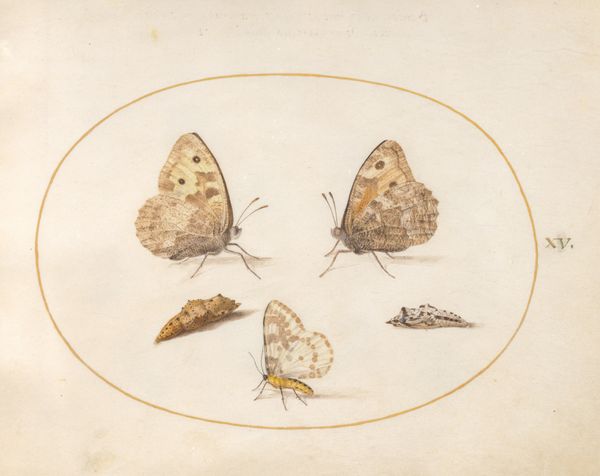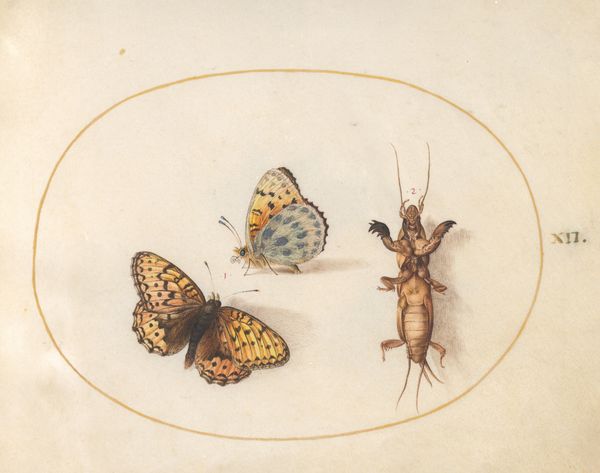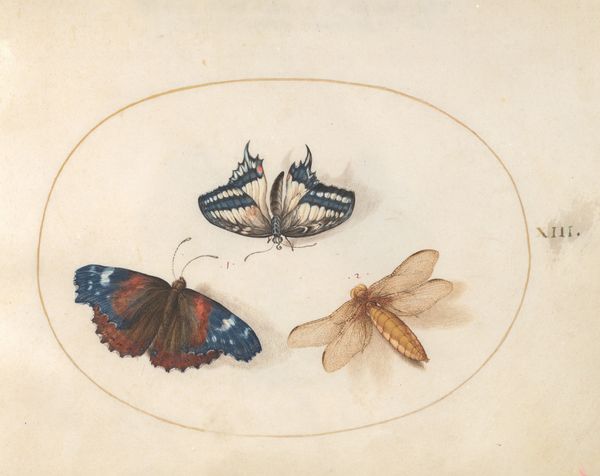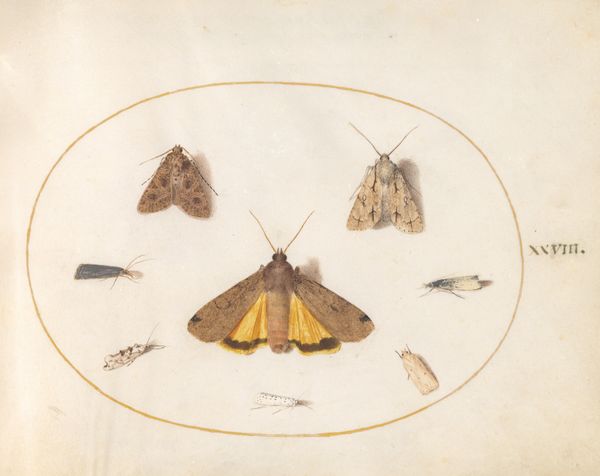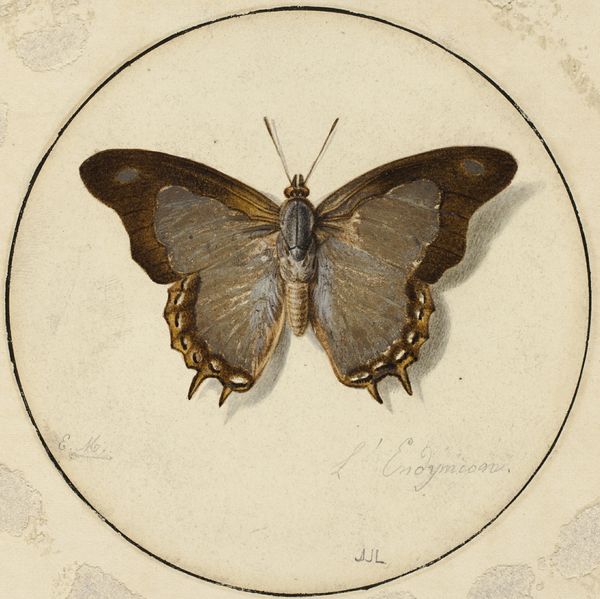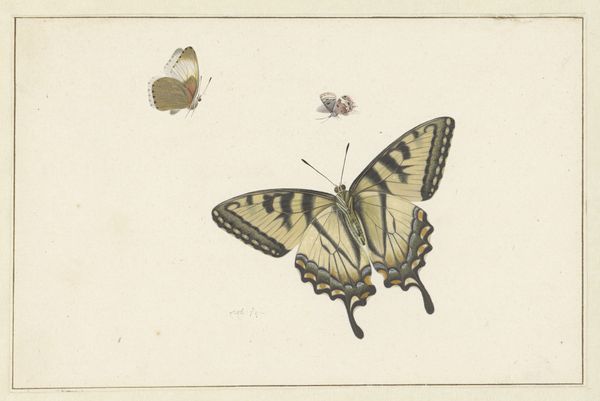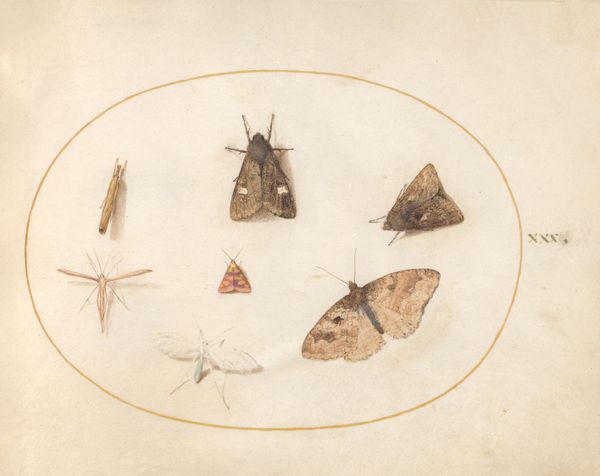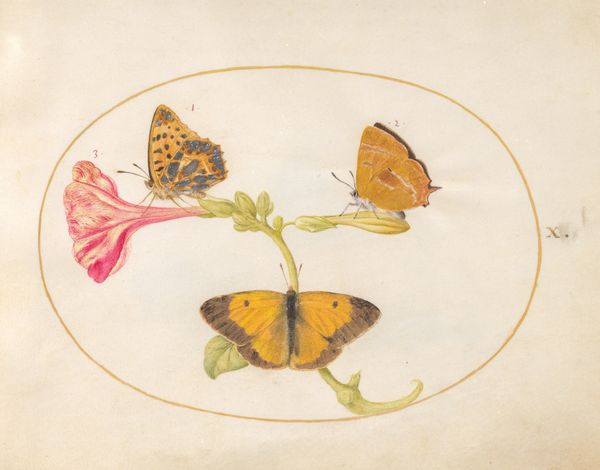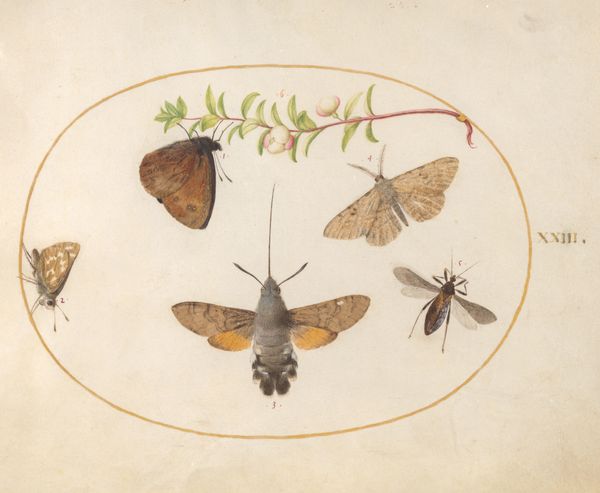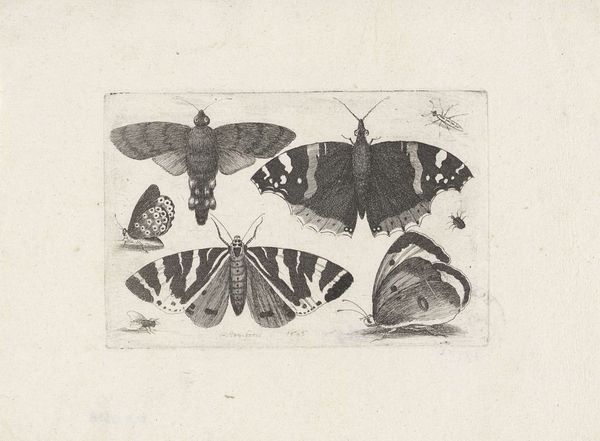
Plate 6: Two Views of a Mourning Cloak (Camberwell Beauty) Butterfly with a Comma Butterfly c. 1575 - 1580
0:00
0:00
drawing, coloured-pencil, watercolor
#
drawing
#
coloured-pencil
#
11_renaissance
#
watercolor
#
pencil drawing
#
coloured pencil
#
watercolour illustration
#
northern-renaissance
#
watercolor
Dimensions: page size (approximate): 14.3 x 18.4 cm (5 5/8 x 7 1/4 in.)
Copyright: National Gallery of Art: CC0 1.0
Editor: So, this is Joris Hoefnagel’s “Plate 6: Two Views of a Mourning Cloak (Camberwell Beauty) Butterfly with a Comma Butterfly,” created around 1575-1580. It's a watercolor and colored-pencil drawing, and it's just so delicate. What strikes me most is the scientific accuracy alongside this clear aesthetic beauty, but what do you see in this piece? Curator: What I find fascinating is its place within the burgeoning culture of scientific illustration. Remember, this is the late Renaissance. Europe is experiencing an explosion of interest in the natural world. Powerful individuals are investing in scientific documentation and collections as marks of knowledge, and therefore, of power. This level of detail wasn't just about appreciating beauty, but about claiming a specific kind of authority through accurate representation. Do you think this changes how we perceive its beauty? Editor: It does make me consider its initial audience and the statement it was making. I guess it's not *just* a pretty picture of butterflies. How did the elite view art in relation to scientific advancement back then? Curator: For many, the line between art and science was much blurrier than it is today. Think of the anatomical drawings of Leonardo da Vinci – artistic skill served a scientific purpose, and scientific inquiry inspired artistic innovation. These meticulously rendered insects were both objects of study *and* valuable additions to prestigious collections. There was great social prestige in having accurate portrayals of the natural world. This kind of work reinforced hierarchies and the knowledge systems supporting them. It certainly makes me wonder about who had access to seeing such things. Editor: That’s fascinating! So it’s about who controls knowledge and how art played a part in that. Curator: Exactly. Reflecting on this piece helps me see how the patronage of the arts in the Renaissance was deeply intertwined with the development of scientific thought and, ultimately, the exercise of power. Editor: I'll never look at a Renaissance watercolor the same way again!
Comments
No comments
Be the first to comment and join the conversation on the ultimate creative platform.
